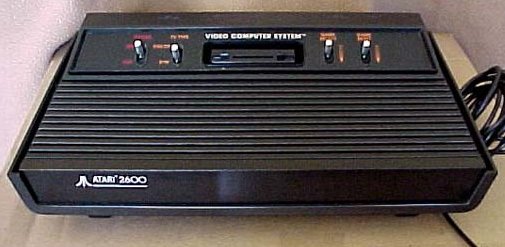A Historical Look at Video Games


The Ancestry of the Arcade
The Birth of the Video Game
On the Go and in the Home
Early Arcade Classics
Competition on the Home Front
Video Games: A Cultural Movement
The Downward Spiral

Atari 2600 system

Atari 2600 Pitfall game
Home cartridges of these arcade titles continued to increase the 2600 VCS hold on the consumer market. The industry sales doubled to nearly one billion dollars in revenue with Atari leading the way, thanks to games such as Pac Man, Defender, Asteroids, Bezerk, Frogger and Yar's Revenge. Having no structured licensee program in place, the 2600 became an outlet for a host of cartridge peripherals such as the gray market double-ended cartridge and the cassette tape add-on. They introduced keypad controllers to allow for more options. One game could have innumerable variations, thanks to options like invisible players and customized boards. Until now, a game did not include credit listings of its designers and programmers. One ingenious programmer on the staff of Adventure, one of the earliest fantasy games, got the crazy idea to hide his name in one of the castles. When word got out that his name was hidden in a secret room, gamers went nuts looking for it. Searching for a hidden goal inspired gamers to spend many hours of play and exploration, making Adventure a hit and giving Atari an idea; the hidden bonus or code feature was born.
But Atari would not hold their monopoly on the home video market for long. Mattel introduced a system known as Intellivision, which was similer to the 2600 but provided clearer graphics and allowed for more on-screen image. The unit featured a twelve-digit keypad and dial control, with the option of a keyboard add-on. Activision, the first third party developer of 2600 carts, had become second only to Atari in home game development with games like Pitfall. They were again first on the Intellivision scene with the release of Stampede. A few of the more memorable game for the Intellivision were Hockey, AstroBlaster and Micro Surgeon, which placed the player in a huge body to fight off sickness with aspirin. The downside of the system was that it only played Intellivision games and third party releases were slow in development. Many gamers also complained that the thumb dial was unresponsive and inaccurate compared to that of the 2600.
